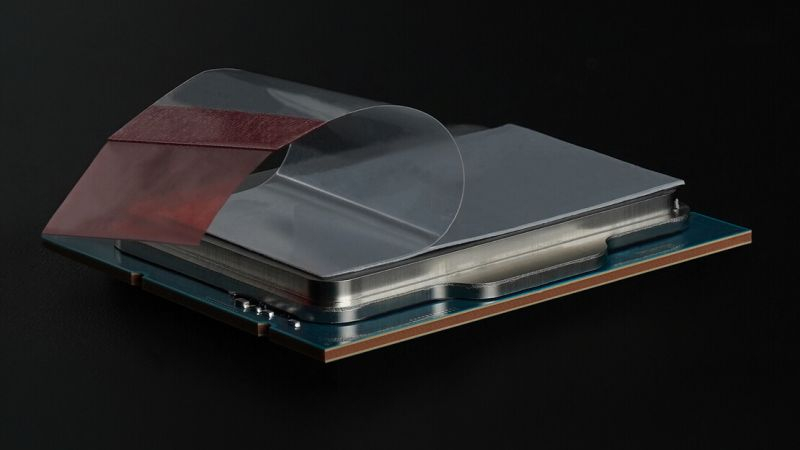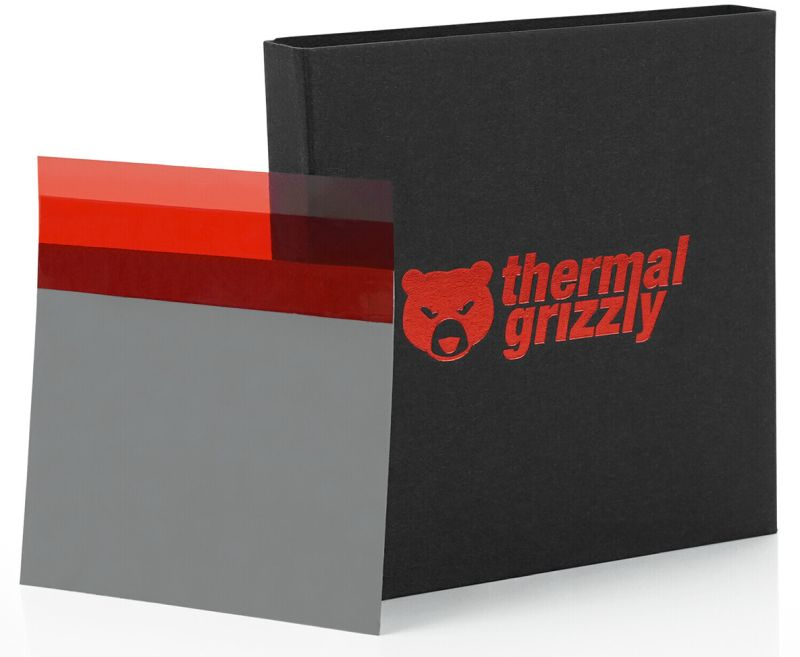Each type of thermal interface has its own advantages and disadvantages. In particular, classic thermal paste tends to degrade over time and be squeezed out from under the base of the cooler radiator. Thermal pads are more stable in shape and easier to apply initially, but they are inferior in thermal conductivity to plastic thermal paste. Thermal Grizzly has reportedly achieved a compromise between these two types of thermal interface.

Image Source: Thermal Grizzly
PhaseSheet PTM thermal pads, as the name suggests, use the phase transition effect: when heated above 45 degrees Celsius, they increase plasticity, adhering more tightly to the cooled surface under the influence of mechanical pressure from the radiator, and upon subsequent cooling after turning off the cooled element, they again regain their original rigidity, thereby eliminating the significant influence of the “squeezing out” effect of the thermal interface. In addition, the thermal pad of this model does not conduct electricity.

This type of thermal interface, according to the creators, is optimal for working in conditions where system maintenance is carried out very rarely. The thermal pad has dimensions of 50 × 40 × 0.2 mm and is equipped with a convenient transparent applicator. As noted in the instructions, which are stingy with technical specifications, for optimal distribution of the PhaseSheet PTM thermal interface, it is necessary to apply a force of 300 to 400 N. The best thermal conductivity of the gasket after installation occurs after about ten cycles of heating to a temperature of more than 60 degrees Celsius, followed by cooling. The cost of one Thermal Grizzly PhaseSheet PTM thermal pad of the specified sizes in the company’s online store reaches $10.59.